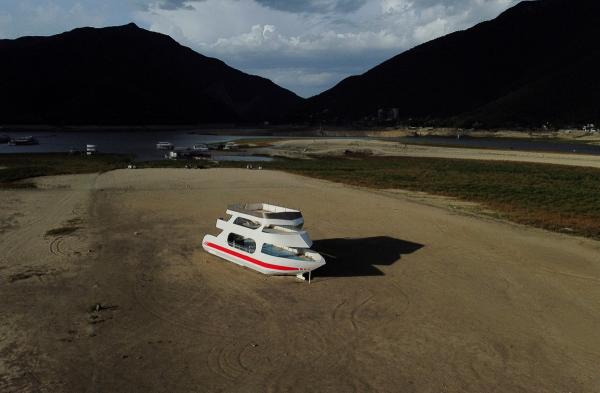Water levels rise again slowly in Monterrey’s supply dams
By Tobias Schmitz
6 Sep 2022 by The Water Diplomat
La Boca, Mexico

The city of Monterrey has been experiencing acute water shortages since June, with only one of the three supply dams to the city of 5 million currently functioning. Water restrictions have been put in place, with some neighbourhoods receiving water only seven hours a day, while other neighbourhoods have received receive no water at all for weeks on end, forcing resident to fetch water from tankers in public areas. North-eastern Mexico has experienced intense drought since January this year, and the three dams supplying the city of Monterrey are at exceptionally low levels. The city of Monterrey is located in the San Juan catchment in north-eastern Mexico and has per capita water availability on par with many countries in the Middle East – i.e. below the threshold of 500 mᶟ/a defined as ‘absolute water scarcity’. The water in the la Boca reservoir supplying the Southern part of the city had dropped to below 5% of its capacity in June. Similarly, levels in the Cerro Prieto dam had dropped to only 0,5% of capacity in early July. The only remaining supply dam for the city is the El Cuchillo reservoir, which is also below 50% of its capacity. However, the city relies on groundwater for some 40% of its supply on average, enabling some continuity of supply even in acute drought conditions.
In June, Mexico’s National Water Commission declared a state of emergency based on the severe extreme or exceptional levels of drought experienced in some of the country’s catchment areas. 23% of the country’s municipalities were experiencing some level of drought in the month of July. However, at a press conference in early August, the Director of Water and Drainage for the city, Juan Ignacio Barragán, indicated that that the Cerro Prieto dam had gained a little liquid in the beginning of the month and expressed confidence that the problem would subside in the course of the month as water levels have begun to increase again, albeit only at a rate of a few centimeters per day, as of the second half of August
